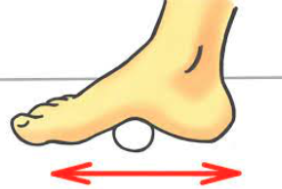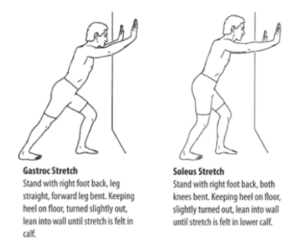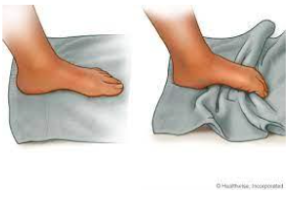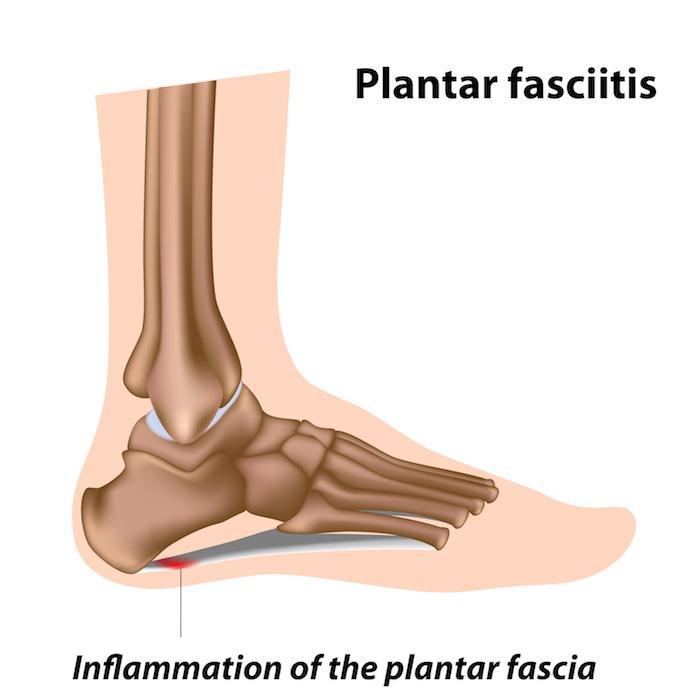Plantar fasciitis is a painful condition that is defined as inflammation of the thick band of tissue that runs across the bottom of the foot. The plantar fascia connects the heel bone to the base of the toes. It supports the arch of the foot and absorbs shock when walking.
It is one of the most common causes of heel pain. Symptoms include a sharp stabbing pain at the heel that is usually worse in the morning and with the first couple of steps after sitting for an extended period of time. Once you get up and start moving the pain usually decreases. It is more common in runners and people who are overweight but can be seen in anyone.
The cause of plantar fasciitis is poorly understood and remains unclear in many cases. However, tension and stress on the fascia can cause small tears. Repeated stretching and tearing of the fascia can irritate in inflame it leading to pain.
Even though plantar fasciitis can develop without an obvious cause, some factors can increase your risk of developing this condition. These include:
Age: more common better the ages of 40-60
Certain types of exercise: activities that place a lot of stress on your heel and the attached tissue; long-distance runners and dancers
Foot mechanics: flat feet, a high arch, or an atypical pattern of walking can affect the way the weight is distributed when standing
Obesity
Occupations that keep you on your feet
Complications can arise from ignoring plantar fasciitis. It can result in chronic heel pain that hinders your regular activities. Because of the pain, you are likely to change the way you walk, which might lead to foot, knee, hip, or back problems.
Physical therapy is a key part of the treatment for plantar fasciitis. Below are some examples of a good place to start if you are experiencing plantar fasciitis.
- Avoid the activity that aggravated it in the first place
- Roll the arch of the foot with a tennis or lacrosse ball.

Start with rolling the bottom of the foot out, from the toes to the heel, for a minute a couple of times throughout the day

- Calf stretching for both the gastrocnemius and soleus muscles
You want to make sure that you hold the stretch for 30 seconds and do it 3 times on each leg.

- Toe yoga
In picture A it shows just trying to lift the big toe and keeping the remaining toes on the ground. You want to complete 2 sets of 10.
Picture B it shows keeping the big toe down and trying to lift the four little toes. You will also want to complete 2 sets of 10
- Towel scrunches
Try to only use the toe muscles to scrunch the towel. Start with 2 sets of 10 
- Heel raises
If you need support make sure that you hold onto a counter or a stable chair. Start lifting both heels off the ground and slowly lower to the floor. Complete 2 sets on 10. Once that gets easy you can progress to doing one leg at a time.

- Single leg balance
Make sure that you have something stable in front of you like the counter or a chair if you are unsteady on your feet. Start by lifting one leg off the ground and holding the position for 15 seconds. Once that gets easy you can increase the time to 30 seconds. If that is easy add a pillow or a foam pad under your foot to make the surface less stable
If you are experiencing plantar fasciitis or heel pain, call our office to make an appointment. We can also assess your shoe wear and make sure that is not contributing to the pain. For example, you should avoid wearing shoes that put a lot of pressure on your feet, such as high heels. You should also avoid flip-flops or shoes that lack sufficient arch support. In addition to physical therapy services, we offer custom-made orthotics and have a virtual restorative yoga and balance class. All would be great adjuncts to help eliminate your pain.
For more information on chronic pain please contact us at 619.260.0750 today.
